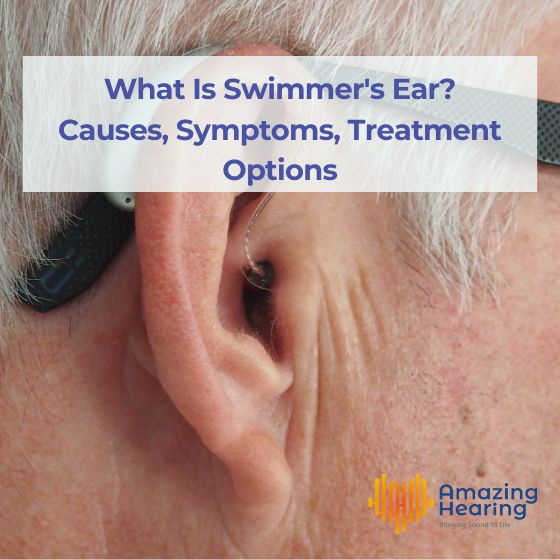Swimmer’s Ear, also known as Otitis externa, is an infection of the outer ear that can be a real nuisance for swimming enthusiasts of all ages. Itchiness, redness and swelling in or around the ear canal often accompany this condition.
Swimmer’s Ear affects children more than adults but anyone who has spent time in the water can end up with it. While preventive measures such as using swim plugs or headphones can minimize your chance of developing any type of infection again due to being in the water we will still like to get information related to Swimming Ears right?
So here you go! We’ll talk about how it comes about, its symptoms, ways to prevent it and what treatments are available should you (or someone you know) find yourself dealing with this uncomfortable condition.
Symptoms
Symptoms of swimmer’s ear can include:
- Earache
- Itching
- Feeling of fullness in the ear
- Ringing in the ears
- Hearing loss
- Dizziness
Causes
There are a few things that can cause swimmer’s ear, but the most common one is exposure to water. When you’re in the water, the moisture gets into your ear canal and creates an environment where bacteria can grow. This can lead to an infection in your ear called swimmer’s ear.
Other things that can cause swimmer’s ear include:
- Using dirty earplugs or headphones
- Exposure to air conditioning or wind
- Having a cold or sinus infection
- Smoking
Worst Case Scenario
Swimmer’s ear can be treated effectively with antibiotics, but left untreated, it can lead to more serious problems. The most serious complication of swimmer’s ear is otitis media, a middle ear infection that can cause permanent hearing loss. In some cases, swimmer’s ear can also lead to meningitis, an infection of the membranes surrounding the brain and spinal cord.
If you think you might have swimmer’s ear, there are a few things you can do to treat it. First, try using a warm compress on your ear to help loosen up any wax or debris. You can also use over-the-counter drops like eardrops or Otex to help clear out the infection. If your symptoms don’t improve after a few days, make sure to see your doctor.
Treatment
If you are someone who suffers from this condition, you know how irritating it can be to constantly have to deal with the pain and discomfort swimmer’s ear brings. Luckily, there are treatments available that can help to ease the symptoms and make life a bit more bearable.
One common treatment for swimmer’s ear is antibiotics. If you are prescribed antibiotics, it is important to make sure that you take them as directed and finish the entire course. This will help to clear up the infection and hopefully alleviate some of the pain.
Another treatment option is using a topical ointment or cream. These products can help to lubricate and protect the ear canal, which can help to reduce pain and inflammation. It is important to follow the directions on the product exactly, as using too much or not using enough could actually make the condition worse.
Finally, if you are experiencing a great deal of pain, over-the-counter painkillers may be recommended. Be sure to talk with your doctor before taking any medication, as some medications can actually worsen swimmer’s ear. ibuprofen or acetaminophen are typically recommended for this condition.
If you are struggling with swimmer’s ear, be sure to talk with your doctor about the best treatment options for you. There are a variety of treatments available that can help to ease the symptoms and make life a bit more bearable.


